Bionic Dogs: The Rise of Canine Prosthetics
A guide to the growing field of canine prosthetics, outlining types, success stories, candidacy, and rehabilitation.
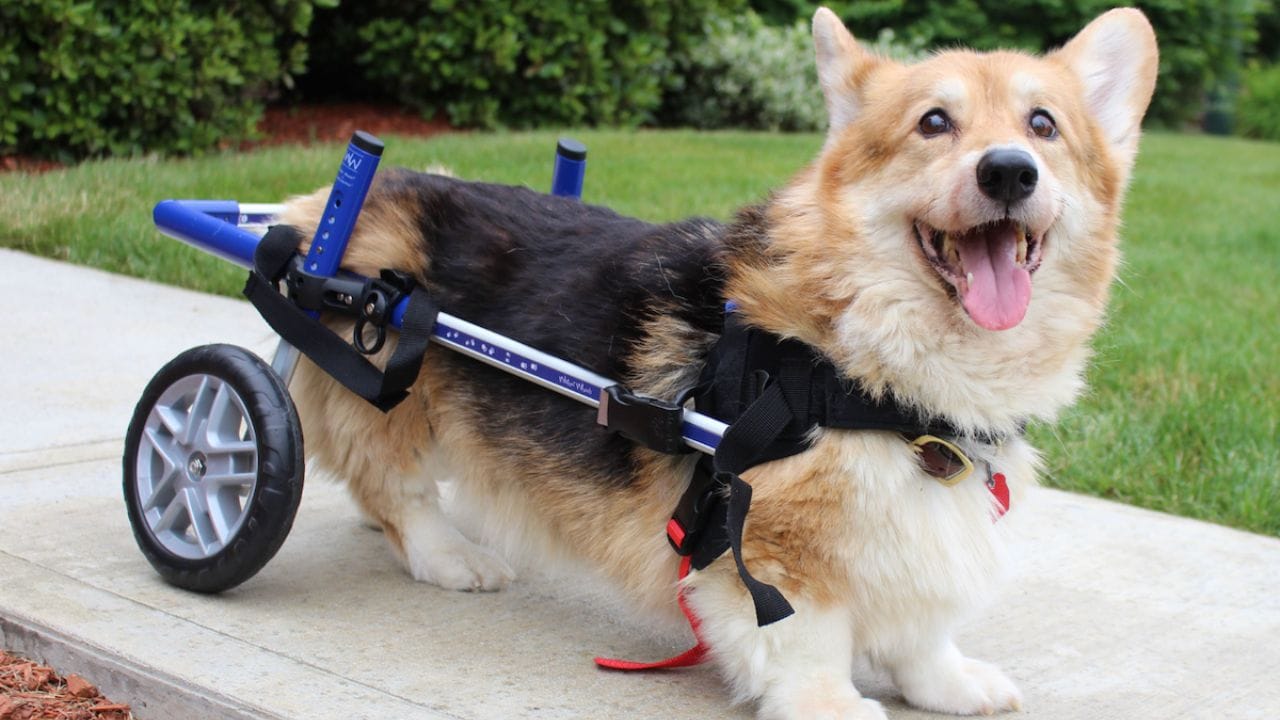
The veterinary field is evolving rapidly, and with it, our capacity to enhance the lives of disabled canines has grown immensely. One of the most exciting developments in recent years is the advancement of canine prosthetics. This innovative field lies at the crossroads of veterinary medicine, biomechanics, engineering, and creative problem-solving. These devices are designed with a clear purpose: to restore mobility, reduce pain, and help dogs regain their independence after injury, illness, or congenital conditions.
Modern prosthetics are both high-tech and thoughtfully simple, customized to each animal’s anatomy and lifestyle needs. From 3D-printed limbs to lightweight braces and mobility carts, these tools not only improve a dog’s physical health but also restore their emotional well-being by allowing them to engage more fully with their environment.
Canine prosthetics aren’t just for household pets; they're also being used to rehabilitate service animals, police K9s, and even military working dogs who have served in combat zones. Whether it’s helping a three-legged dog run again or enabling a war hero to walk with dignity, prosthetic technology is opening new doors, one paw at a time.
What to Consider
Prosthetics are not the right solution for every dog, but in the right circumstances, they can offer life-changing benefits. It’s important to have open and honest conversations about finances, goals, and the rehabilitation process with your veterinarian and any other care partners involved.
Setting realistic goals is a key part of this process. Talk with your veterinarian to determine what is achievable for your dog. Do you hope your dog will return to hiking, or simply walk short distances comfortably? Are you aiming for them to run, jump, and play like before, or just stand and eat with more ease? These goals will help guide prosthetic design and set appropriate expectations for rehabilitation.
Cost is also a significant factor to consider. These high-tech devices can be expensive (often between $1,000-$2,000), and the investment doesn’t stop at the initial fitting. Additional costs may include physical therapy, maintenance, and adjustments. It’s important to be financially prepared, especially since not all dogs adapt to prosthetics easily or quickly. Understanding your goals and financial capacity helps ensure that pursuing a prosthetic is in the best interest of both your dog and your family.
Dogs naturally carry about 60% of their body weight on their front limbs, so a front leg amputation, while sometimes necessary, can lead to long-term balance challenges. Conversely, a hind limb amputation may result in difficulties with rising, jumping, or navigating stairs.
Prosthetics tend to be most successful when the dog has a strong, stable residual limb, tolerates being handled, and shows the physical and mental adaptability needed to adjust to the device. A strong support system is also essential, as adapting to a prosthetic takes time, patience, and consistency.
However, not every dog is a suitable candidate. If the dog experiences persistent discomfort, skin breakdown, behavioral changes, anxiety, or signs of nerve damage, or if the residual limb is too short or unstable, prosthetics may not be appropriate, at least not at that time. In such cases, alternative mobility aids, pain management strategies, or rehabilitation approaches may offer better outcomes and a higher quality of life.
Process
The first step in exploring prosthetic options is meeting with your veterinarian to determine whether amputation is the most appropriate choice for your dog’s condition. In some cases, alternative treatments such as physical therapy, orthotic braces, or pain management may be more suitable and less invasive. If amputation is necessary, the surgical site must fully heal before prosthetics can be considered.
Once healing is complete, your care team, often including your veterinarian and a rehabilitation specialist, will help determine whether your dog would benefit most from a prosthetic limb, mobility cart, or no device at all. If prosthetics are deemed the best option, it’s important to understand the types available and how they correspond to the level of amputation:
- Transradial Prosthetics: These are used when the forelimb is amputated below the elbow. They are typically considered for dogs that have experienced significant trauma but retain several inches of residual limb below the elbow, allowing for proper prosthetic attachment and function.
- Transhumeral Prosthetics: These are designed for dogs with forelimb amputations above the elbow. They help restore balance and redistribute weight across the remaining limbs, making them especially useful for dogs missing the entire front leg.
- Transtibial Prosthetics: Used for amputations of the hindlimb below the knee. These prosthetics are designed to help reduce joint stress by absorbing the impact from walking, utilizing shock-absorbing materials near the paw.
- Transfemoral Prosthetics: These are used in dogs with hindlimb amputations above the knee. Acting as full-leg prosthetics, they improve balance and redistribute weight, which helps reduce stress on the remaining limbs.
After selecting the appropriate prosthetic for your canine, you may need to contact a specialized company if your veterinarian does not provide this service. The residual limb will then be cast using plaster materials, as prosthetics are fully custom-made devices. Information such as the animal’s size, weight, height, breed, stance, and gait is carefully considered to ensure the best fit.
Once this data is collected, the prosthetic is fabricated either with thermoplastics and metal or through 3D printing, depending on the company. This process can take anywhere from a few weeks to several months, depending on the complexity.
Finally, your dog will be fitted with the prosthetic, and any necessary adjustments will be made. After the fit is optimized, the dog should undergo rehabilitation and physical therapy to ensure proper use and comfortability with the device.
Places to Contact
Many companies are at the forefront of the field of canine prosthetics. Here are a few to consider:
- Bionic Pets: Founded by Derrick Campana, Bionic Pets offers innovative animal prosthetics and orthotics. Campana began his career creating prosthetics for humans, but soon realized the need to address mobility challenges in animals. He has since become a pioneer in the field, helping shape the modern landscape of animal prosthetics.
- Specialized Pet Solutions: CEO Angela Boncz has over 15 years of experience in animal orthotics and prosthetics. After a brief time in the human field, her personal experience with her dog, Leona, who needed cranial cruciate ligament repair, and her adoption of a three-legged mini pony named Prince inspired her to focus on veterinary applications.
- 3D Pets: This company uses advanced 3D printing technology to create fully customized prosthetics for animals. Their goal is to revolutionize the field through personalized design and innovation.
- OrthoPets: Established in 2003, OrthoPets consists of a team of specialists, engineers, and 3D technologists who develop custom prostheses for a wide variety of animals. They are one of the most recognized names in veterinary orthotic and prosthetic care.
- Animal Ortho Care: This company combines the expertise of fabricators and veterinary specialists to produce a wide range of products from pain management devices to custom prosthetics. They are dedicated to improving the health and well-being of animals through innovative solutions.
There are many other innovative and amazing companies out there. Be sure to do your own fine-tuned research and choose the one that best fits the needs of your dog and your family.
Success Stories
Naki’o: The World’s First Bionic Dog
Naki’o, a sweet mixed-breed pup from Nebraska, became the world’s first dog to receive four prosthetic limbs. Abandoned at just five weeks old along with his mother and siblings, Naki’o suffered severe frostbite after stepping into an icy puddle during a harsh Nebraska winter, resulting in the loss of all four paws.
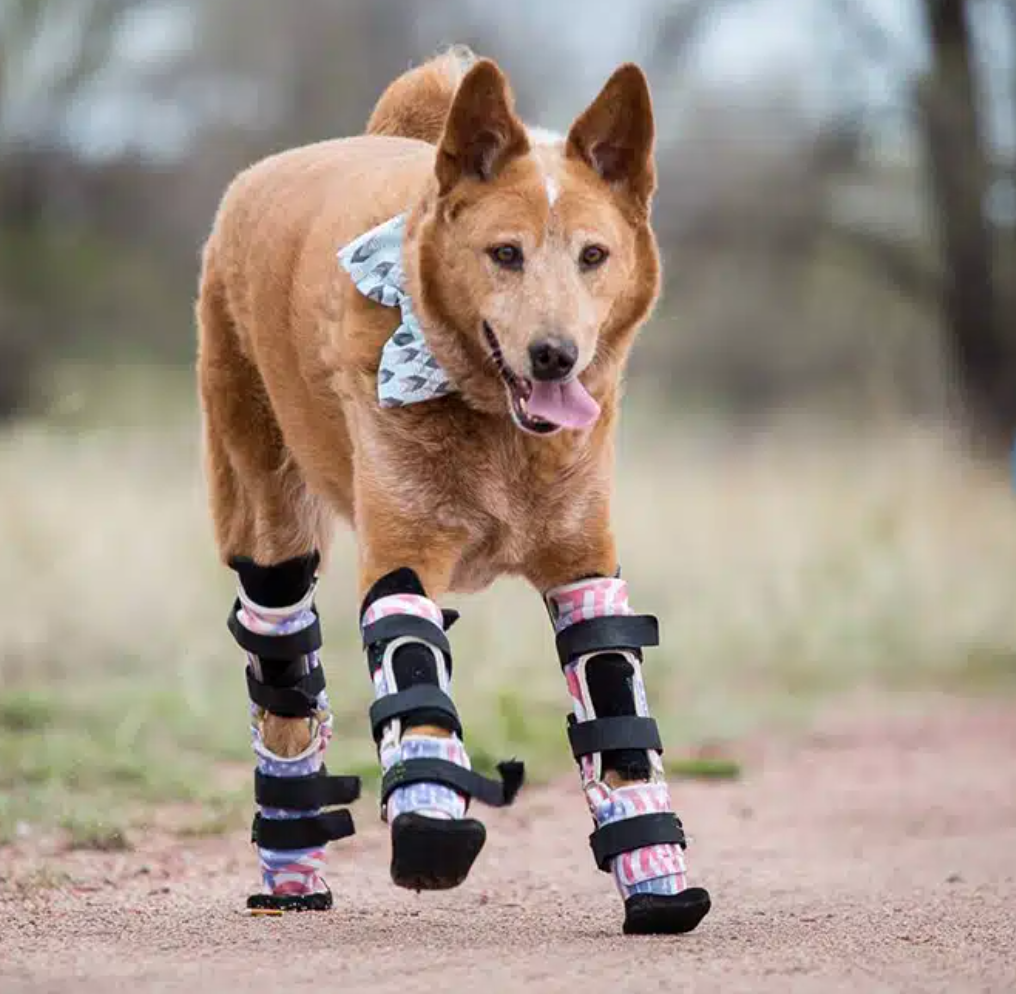
He was later rescued by a Colorado shelter and adopted by Christie Tomlinson, a veterinary surgeon. As Naki’o grew, his mobility began to decline. However, with the help of OrthoPets, he was fitted with custom prosthetics, restoring his ability to run, play, and live a full, happy life.
Chi Chi: The Therapy Dog with a Golden Heart
Chi Chi, a Golden Retriever with an unbreakable spirit, was rescued from a dumpster in South Korea. Her legs had been bound tightly with wire, causing severe infection and irreversible damage. By the time she was found by an incredible rescue group, all four of her limbs had to be amputated to save her life.

Despite the trauma, Chi Chi never lost her joyful smile. Elizabeth Howell and her family saw a video of Chi Chi and instantly knew she was meant to be part of their lives. After bringing her home, they reached out to Bionic Pets to create custom prosthetics for her. Once fitted with her new set of paws, Chi Chi didn’t just walk; she inspired. She became a therapy dog, spreading joy and hope to everyone she met.
Cleo: The Tripod with Unstoppable Energy
Cleo, a precious dog rescued from Oklahoma, came into the world of her adopters already as a tripod. Her exact origin story remains a mystery, but her spirit was undeniable. Even with only three legs, Cleo ran, played, and showered everyone she met with love. She was the kind of dog people looked at and thought, “She doesn’t need any help, she’s doing just fine.” But her adopter, Marques Brownlee, saw beyond the present moment.

Concerned about her long-term joint health and quality of life, he wanted to reduce the stress on her remaining limbs and help prevent arthritis and joint pain. His goal was simple: to ensure Cleo stayed the happiest, healthiest dog for as long as possible. Through the innovative work of 3D Pets, Cleo received a custom prosthetic that made that dream a reality.
Further Reading
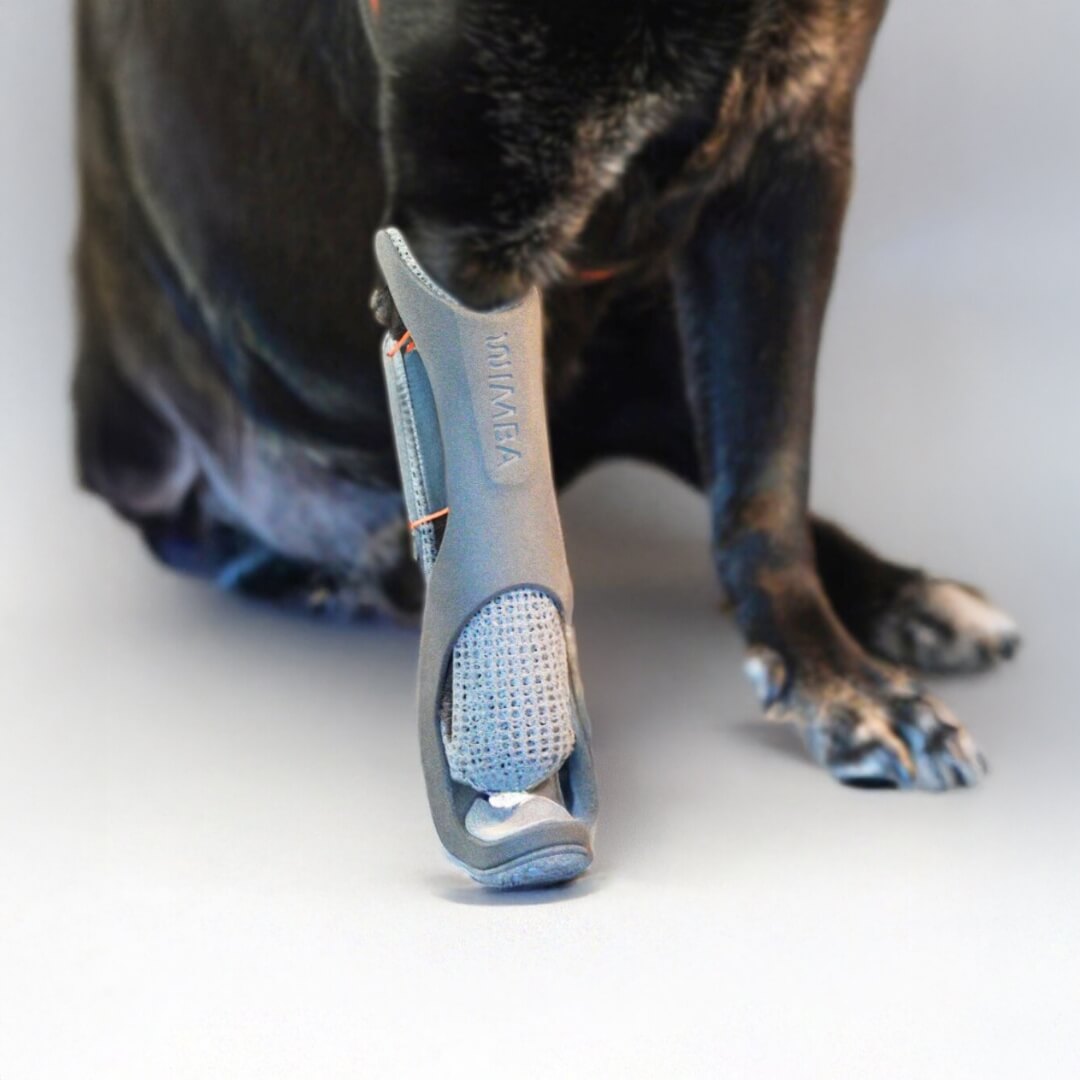
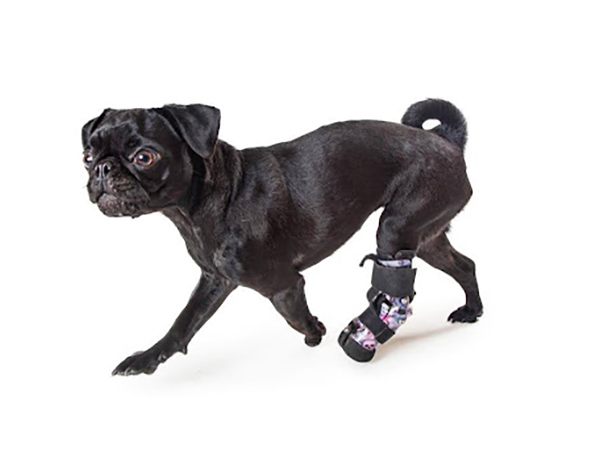
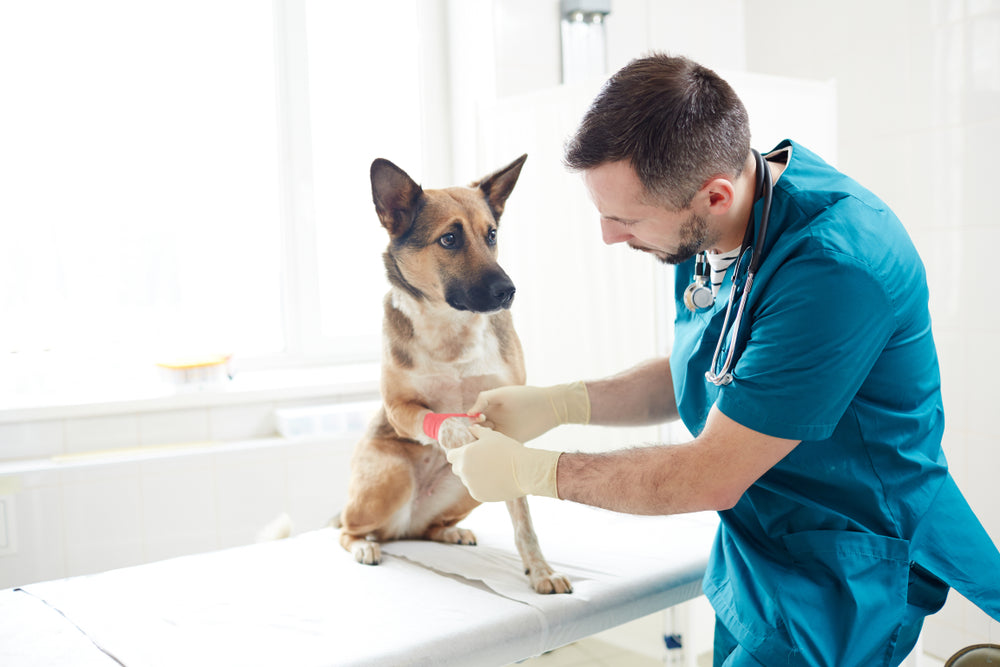
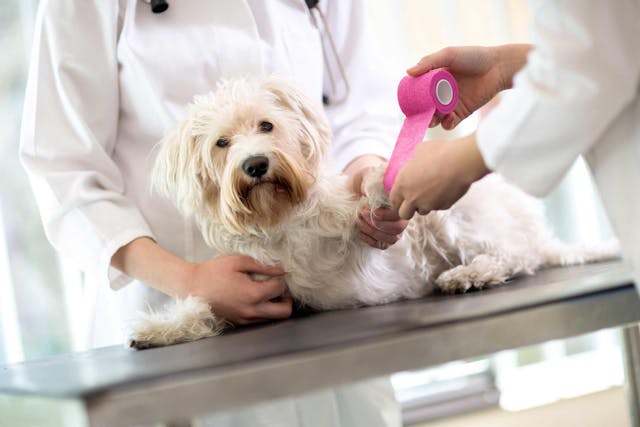

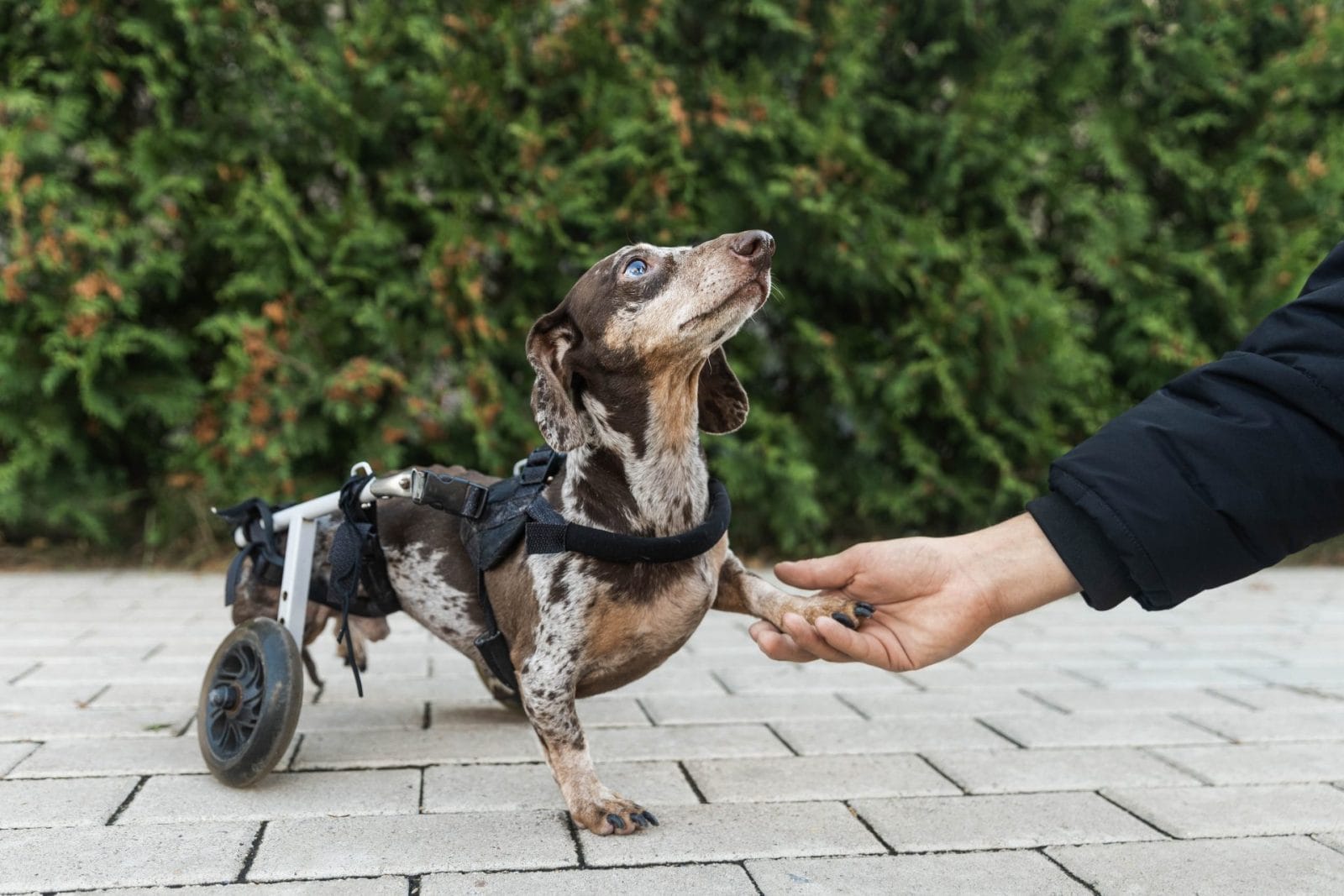
For more on disabled dog support and adoption, keep reading here.







